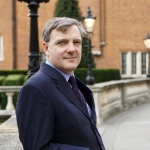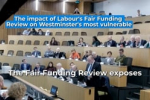Excessive noise on the tube is a health risk for passengers and the residents who can't avoid the constant unsafe noise levels.
In November 2020, the London Assembly unanimously agreed on a motion supporting the adoption of tighter public health standards on both tube noise and excessive vibrations. West Central London GLA Member Tony Devenish proposed a unanimously passed motion today, requesting the Mayor, the new Deputy Mayor for Transport and the TfL Commissioner redouble their efforts. Tony thanked the Commissioner for agreeing to meet and called for "solutions at that meeting".
Tony Devenish explains:
The Mayor so often tells us the importance of taking public transport, but steps need to be taken to create a reliable and safe network for the public to use. Two years ago, I proposed a motion, unanimously passed by this Assembly, for tighter public health standards and very little improvements have been made.
For too long the public’s safety has been ignored as passengers and residents are forced to suffer through excessive tube noise and unacceptable vibrations. You only need to have ridden the Jubilee Line to City Hall to experience this unnecessary risk and annoyance.
The status quo is no longer acceptable, and the Mayor must not stay silent on this issue.
We welcome that the TfL Commissioner this morning agreed to meet with residents and Assembly Members. The Mayor must make Londoners aware of the worst offending parts of the network and what he is going to do to address this prevalent problem.
The full text of the motion is:
In November 2020, the Assembly unanimously agreed a motion stating that:
“This Assembly strongly supports the adoption of tighter public health standards on both Tube noise and excessive vibrations and urges Transport for London to make Tube noise reduction a priority.”
Further to this motion, this Assembly calls for the Mayor, the new Deputy Mayor for Transport and the TfL Commissioner to redouble efforts to mitigate tube noise for both passengers and residents and be more transparent to Londoners on the number of “hot spots” and “rectification activities”.







